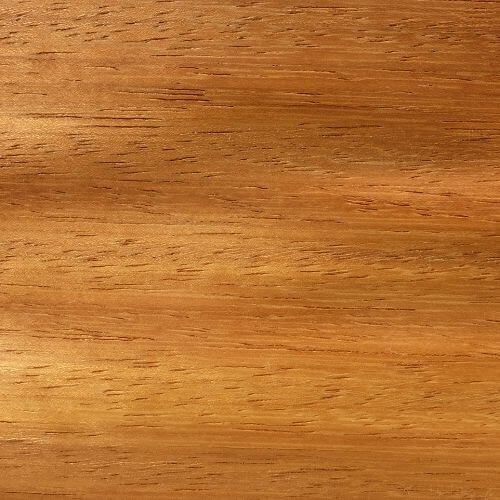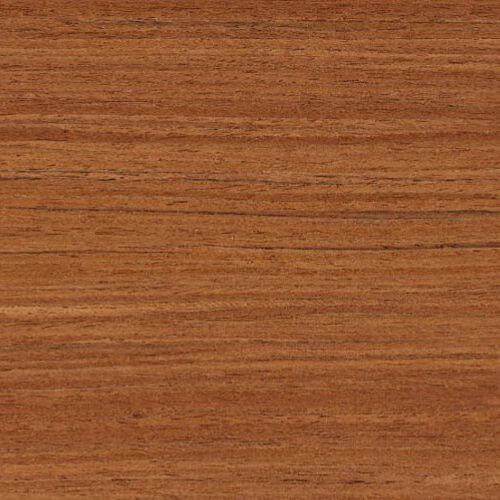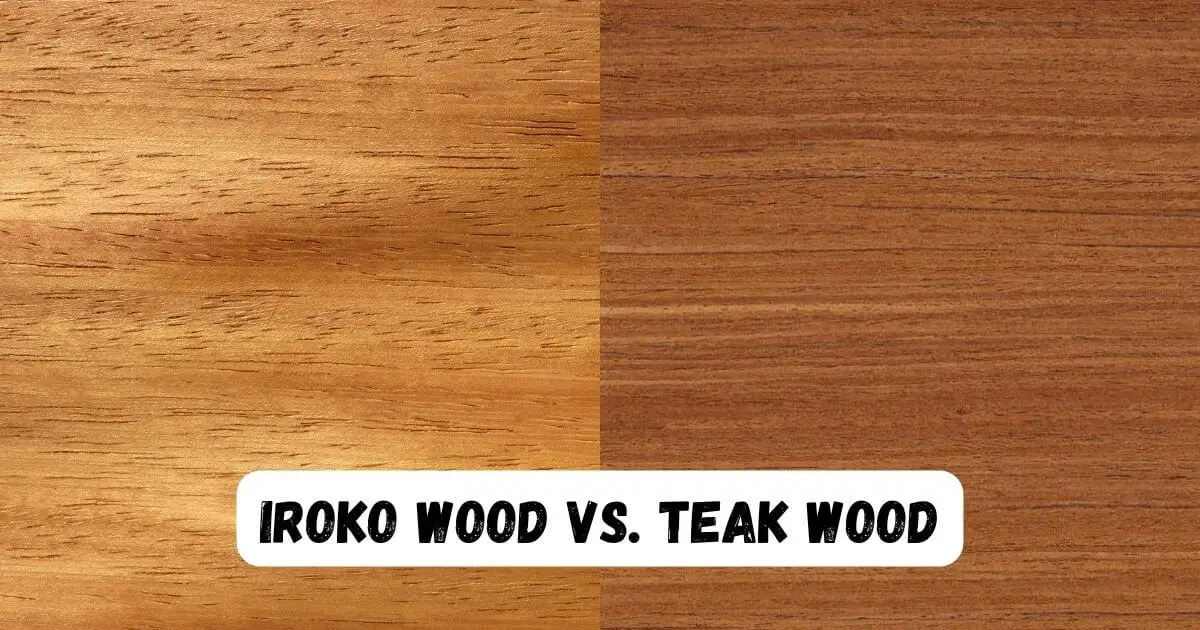Iroko wood is yellow or very light golden-brown, while teak wood is golden-brown or dark brown. If we compare the durability, teak wood is more durable and rot-resistant than Iroko wood.
If you’ve been looking for new furniture or cabinets recently, teak or iroko wood might have crossed your mind.
However, Teak is more popular than Iroko wood for woodworking throughout the world. However, teak and iroko are two of the most popular and beautiful wood options for cabinets and furniture.
If we compare the appearance and other qualities, even though teak and iroko wood are similar to each other, there are some differences between them that can help you choose between the two.
Iroko Wood
Iroko wood is a hardwood that comes from the large Iroko tree (Milicia excelsa), native to the west coast of Africa. The Iroko trees that can grow up to 100 to 150 feet tall and 3-5 ft wide. It is also known as African teak, although botanically, it is not related to teak.
Iroko wood is known for its naturally stable and attractive appearance. That’s why wood is often used for indoor and outdoor applications, although it requires an exterior finish to last longer in outdoor environments.
Teak Wood
Teak wood is highly prized for its high durability, stability, and resistance to rot and decay. It is native to Southeast Asia, especially India, Myanmar, Thailand, and Laos. Teak is considered the primary wood for making high-quality furniture in Asia due to its aesthetic appeal and durability.
Teak wood is a dense, close-grained hardwood that comes from the Tectona grandis tree, which can reach a height of 100-130 ft (30-40 m).
Difference Between Iroko wood and Teak Wood
| Characteristic | Iroko Wood | Teak Wood |
| Scientific name | Milicia excelsa and M. regia | Tectona grandis |
| Tree Size | 100-130 ft (30-40 m) tall, 3-5 ft (1-1.5 m) trunk diameter | 100-130 ft (30-40 m) tall, 3-5 ft (1-1.5 m) trunk diameter |
| Hardness | 1,190 lbf (5,310 N) | 1,070 lbf (4,740 N) |
| Weight | 41.2 lbs/ft3 (660 kg/m3) | 40.9 lbs/ft3 (655 kg/m3) |
| Elastic Modulus | 1,580,000 lbf/in2 (10.90 GPa) | 1,781,000 lbf/in2 (12.28 GPa) |
| Type | Hardwood | Hardwood |
Appearance : Iroko Wood Vs Teak Wood
Iroko wood has a medium to coarse texture and an interlocked grain. The heartwood is a golden brown color that darkens with age to a rich copper brown. The sapwood is pale yellow and is clearly demarcated from the heartwood.
When Teak is freshly cut, it has a natural honey-golden color; when the wood starts to dry, it turns golden or medium brown. Like many woods, Teak becomes dark and shiny/oily over time.
Take a look at Iroko and Teak wood side by side below:


Iroko vs Teak wood : Uses
Teak wood is used to make a variety of products, such as furniture, decking, fencing, boats and musical instruments. Teak is particularly popular for outdoor use, as it is highly resistant to weather and insect damage.
Iroko wood is primarily used for boat building, veneering, flooring, furniture making, paneling, cabinetry, parquet, and outdoor decking.
Which Wood Is Durable: Teak Wood or Iroko Wood?
Teak wood is more resistant to moisture absorption than Iroko wood, which helps prevent rot and decay. It is also resistant to wear and tear. Teak wood contains natural oils, and the silica content contributes to its resistance against moisture, insects and fungus.
Which Wood Is Cheaper: Teak Wood or Iroko Wood?
Iroko wood is often used as a cheaper alternative to Teak Because Iroko wood is more readily available than teak, and the tree is quickly ready for harvesting for lumber. Another reason teak is expensive is that it is darker than Iroko, which most people prefer.
However, the price of wood depends on many factors, such as grade quality, size and place of purchase.
Workability: Iroko vs Teak Wood
Despite being denser than teak wood, Iroko wood is easy to work with hand and machine tools. Because teak wood contains a high amount of silica, which has a pronounced blunting effect on cutting edges.
Hardness: Iroko vs Teak Wood
Teak is generally softer and lighter than Iroko wood. Teak wood has a Janka Hardness value of 1,070 lbf (4,740 N), whereas Iroko has a value of 1,190 lbf (5,310 N).

